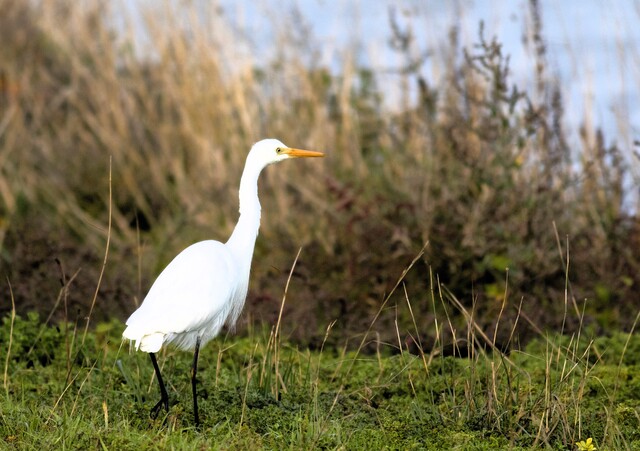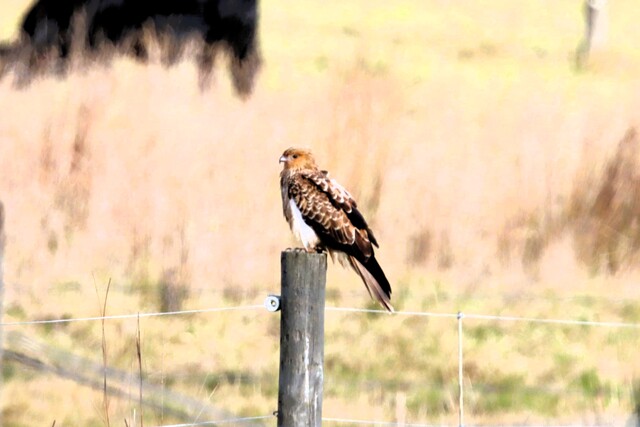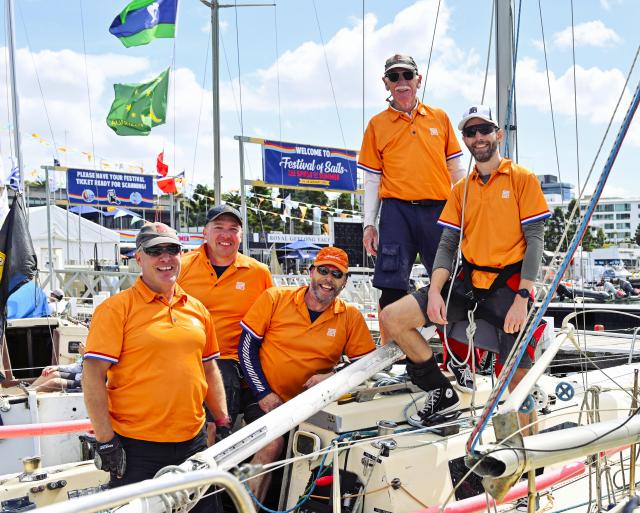I was looking at my phone one morning and noticed, via Facebook, that there was an American golden plover in full breeding plumage at Western Treatment Plant.
This inspired me to immediately take off in the car to WTP to try and see this unusual migratory shorebird. Facebook is good for some things.
I got to WTP by 7am on a cold and dull overcast morning. I always venture to T-section lagoons first, so I made my way there, hoping that an owl or something similarly exciting would appear in the dull light. The WTP is such a large area and I had no idea where the American golden plover had been seen, so the T-section lagoons seemed like as good a place as any to start.
I saw an unusual bird in this area, in that there was an intermediate egret at the crake pond. There are five species of egrets in Australia, namely great, cattle, little, reef and intermediate egrets.
Little egrets can be readily seen around Queenscliff, and great egrets can be spotted around Lake Connewarre and other Bellarine wetlands. Cattle egrets hang around farm paddocks at the feet of cattle to feed on insects. Reef egrets can be either white or grey in plumage, and they can be seen on rocky coastlines in northern Australia.
Intermediate egrets are also predominantly seen in northern Australia. Last time I was at Fogg Dam near Darwin there were about 100 of them. So I was surprised to see one at the crake pond. It was smaller with a shorter neck compared to a great egret. A good way to differentiate the egret species is to look at the yellow skin around the eye. In the great egret there is a line of this skin that extends past the eye whereas in the intermediate egret, this area of skin ends underneath the eye.
I asked another bird watcher if he knew where the American golden plover had been seen, and he told me to go to the Borrow Pits, which are located a long way from the T-section lagoons, so I made my way out after spotting two mature brolgas with a fully-grown juvenile.
I entered the next section of the WTP near the Beach Rd boat ramp where I saw a magnificent white-bellied sea eagle fly over. On one of the ponds I had to stop and watch around six white-winged black terns dipping and diving over the pond.
I eventually made it to the Borrow Pits and with about 30 other birdwatchers were standing at the pond with binoculars and scopes and cameras searching for an American golden plover in full magnificent breeding plumage. This bird did not eventuate and I could have stayed in the one spot all day waiting, but I had a feeling that it was continuing a flight to the northern hemisphere for breeding purposes.
On the way home I had a quick stop at Avalon Beach where I saw a fairy tern in the distance.
The only other birdwatching I have done over the past few weeks was a drive down Moller’s Lane in Leopold on my way home from work, where I saw six whistling kites and a peregrine falcon, which made the detour worthwhile.
On the subject of Leopold I received an email from John, who lives around the Moller’s Lane area. John spotted a little eagle at 9.12am on Anzac Day and two wedge-tailed eagles at 9.15am in the same locality.
The little eagle had swooped down and possibly fed on a rabbit then flew off. The two wedge-tailed eagles were photographed in the same location soon after.
John also observed that there are many superb fairy wrens and willie wagtails about his property as they must have had a successful breeding season, which is great to hear about. John has also photographed the same whistling kites that I saw.
I also received an email from Kathleen who has lived in St Leonards for the last eight years after moving from beautiful Benalla. Kathleen is a keen bird watcher and she was so excited to also see an eastern spinebill in her garden last week.











